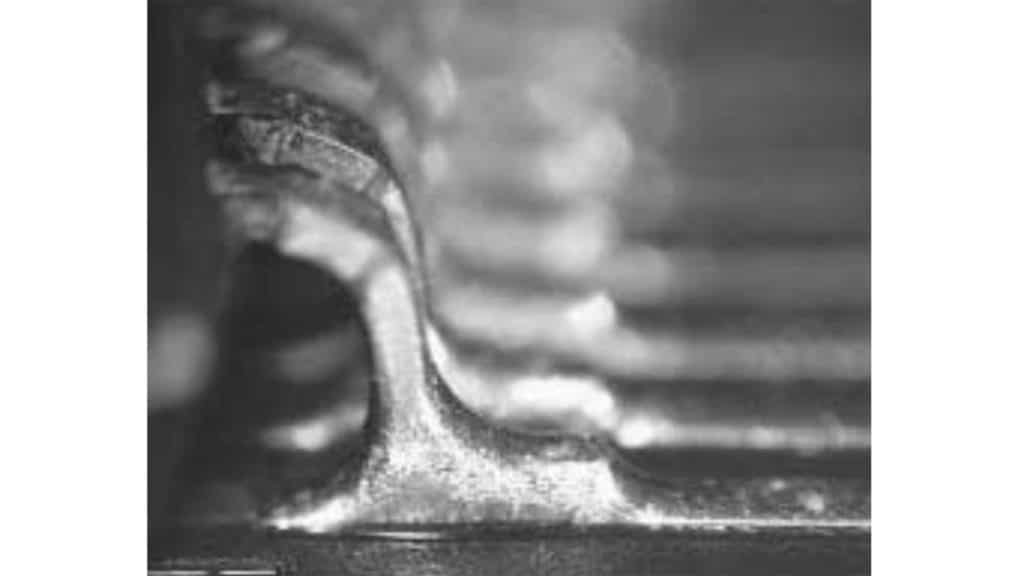The use of gold (Au) finish on military and space qualified parts provides useful protection to the base material of leads during storage of the parts. The use of a gold layer over the barrier metal on the lead avoids the appearance of corrosion. On the other hand, as gold is not essentially soluble in Sn nor Pb, embrittlement on the lead can be produced when soldering using SnPb solder.
If the gold layer does not completely dissolve into the solder, then slow intermetallic reactions can proceed in the solid state. The gold reacts with the soldering, forming brittle intermetallics and preferential cleavage planes.
For this reason, Military/Aerospace and some levels of industrial standards specify the removal of gold plating from components before they are soldered to the PCB to try and inhibit the formation of this gold inter-metallic and the higher percentage risk of fractures forming in the solder joint during end use, especially where the PCB’s are destined for harsh environments. To eliminate the risk, the safest option is to remove the gold before assembly, this process is called “degolding” and it is addressed by the standard J-STD-001 “Requirements for Soldered Electrical and Electronic Assemblies” in the paragraph “Gold removal”
During year 2001, all the NiPd finished packages from manufacturer Texas Instruments were substituted by NiPdAu finished ones (both known as Pre-Plated finishes, PPF, in which the solderable finish is applied at the leadframe maker, not in a post mold finishing operation, PMF), which would provide a barrier to degradation of the finish. This finish consists on three layers over the copper base metal: a first one of Nickel (0.5 µm min), a second one of Palladium (0.02 µm min) and a last one of Gold (30 Å to 150 Å).
As per the bibliography available, recommended Au content on the joint should be less than 3% weight. Taking into account the very low width of the Au layer on the finish of the lead, Texas Instruments Application Report SZZA031 “A Nickel-Palladium-Gold Integrated Circuit Lead Finish and Its Potential for Solder-Joint Embrittlement” (December 2001) demonstrates, based on theory and experimentation, that main contribution of Au to the solder joint comes from the Printed Wiring Board (PWB) finish. On this testing, different thickness NiAu finish are considered for the PWB. Some more details about the evaluation of NiPdAu terminations are available in Texas Instrument evaluation paper (July 2001) here.
After metallographic analysis of the joint, it was shown that:
- As the gold from the component lead is minimum, it is dissolved on the solder.
- While the Sn melts during reflow, the sacrificial Au/Pd layer of the Surface is dissolved. The solder joint is made to the Ni surface of the component lead.
- There is no Cu migration through the Ni barrier layer of the lead.
- In a system with no Au on the PWB and with a standard Au thickness on the lead, there is not Au detectable in the bulk of the solder joint.
- The Au from the PWB can migrate across the solder joint and appear at the lead/solder interface in the case of the NiPd-finished lead (no gold, previous finish used by Texas Instruments).
- At very high Au thicknesses on PWB and leads but give Au concentrations of less than 3 weight %, acicular SnAu intermetallics do form. These do not appear to be enough toaffect pull strength.
- The risk of Au embrittlement caused by NiPdAu component lead finish is essentially negligible.
- 3% weight Au on the solder is only achieved for artificially high thickness on Au layer on the PWB.
- Good solderability with SnPb and Pb free solders.
In conclusion, as NiPdAu finish does not pose risk of embrittlement, there is no need of performing degolding on parts using this finish.
featured image source: Texas Instrument
